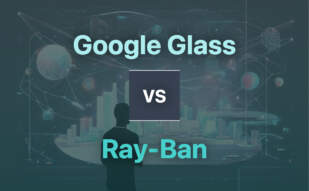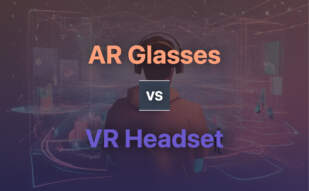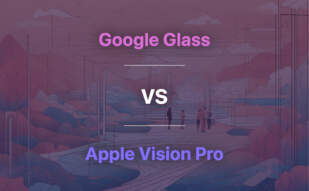Ray-Ban, a luxury eyewear brand established in 1936, known for iconic styles like Wayfarer and Aviator. In 2021, they launched Ray-Ban Stories, smart glasses with a built-in camera and Bluetooth earphones.

For those exploring alternatives to Ray-Ban, consider Vision Pro, Apple Vision Pro, Spectacles, Google Glass, HoloLens, and HoloLens 2.
Vision Pro
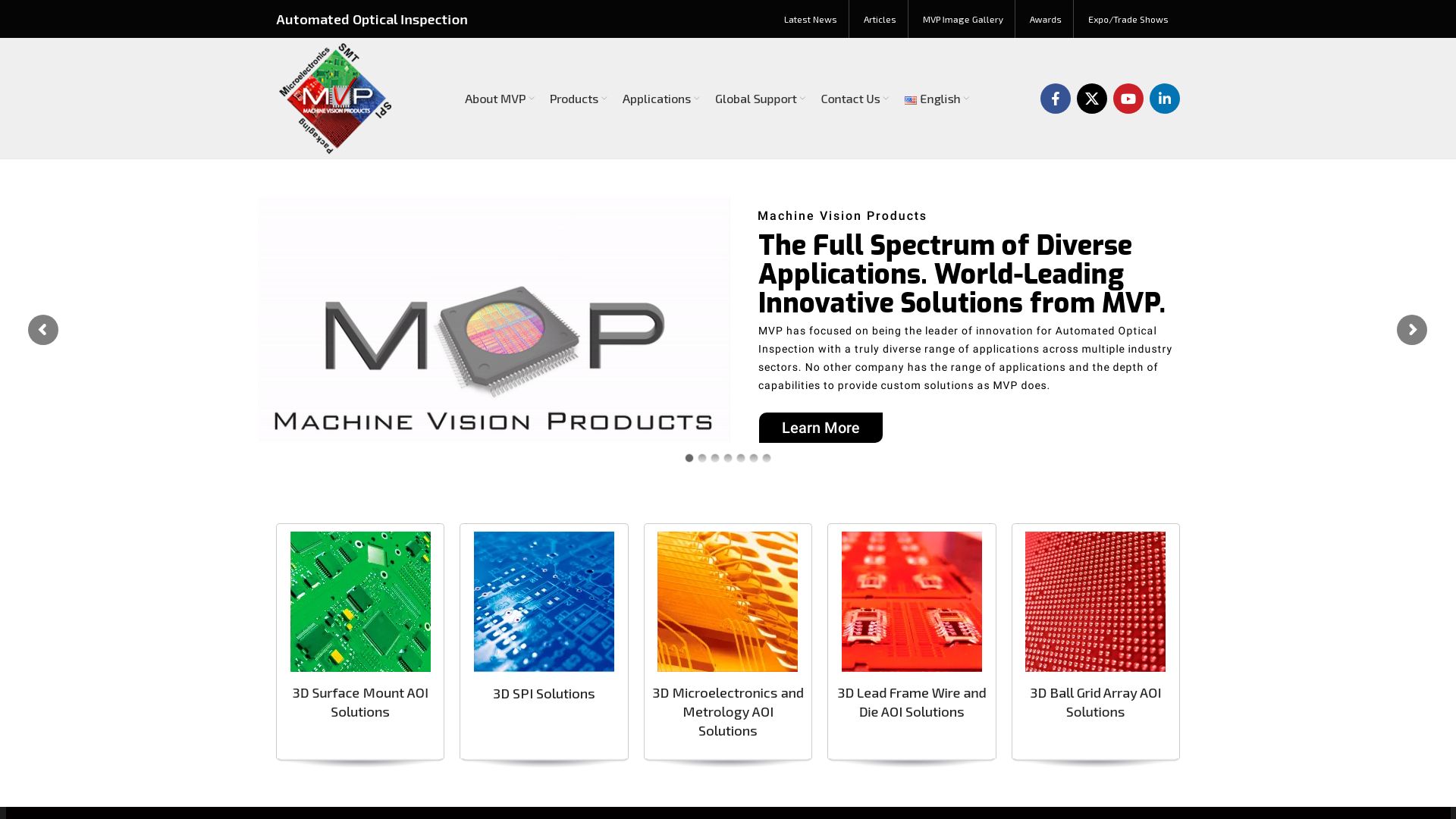
Molding the future of AR, Vision Pro is a front-runner in integrating digital content into physical space. Boasting a uniquely user-centric approach and powered by Apple’s premier spatial operating system, Vision Pro propels users into unparalleled dimensions of connectivity and collaboration.
Vision Pro Top Features
- Immersive Spatial Audio: Enhancing the user reality with sounds mimicking the real world.
- Atomized Workspace: Enables users to scale apps down to hip-pocket size, transforming any space into a personal workplace or theater.
- Virtual Avatars: Foster more vivid interactions by mimicking human likeness.
- Precise Eye Tracking: Dismisses the need for controllers, providing a smooth, intuitive experience.
- Aluminum Body and Light-Seal:: Designed for comfort and immersion, it blocks external light to intensify your AR experience.
| Additional Features | Description |
|---|---|
| 23 million pixel micro-OLED display | Offers superior than 4K resolution, enhancing the virtual viewing experience. |
| Optic ID security system | User recognition based on the unique iris of the individual, providing improved safety and access. |
| External Battery | Offers up to 2 hours use capacity and can function as a computer or iPad. |
Vision Pro Limitations
- External Battery Requirement: A slight inconvenience as users are compelled to handle a dangling cable due to the external battery.
- High-end Price: With a cost of $3,499, the price tag might be a barrier for some potential users.
Vision Pro Pricing
This advanced piece of tech comes with a hefty price of $3,499. For those seeking a more budget-friendly option, a cheaper version, with fewer cameras and sensors, is available between $1,500 and $2,500.
Vision Pro Use Cases
Use case 1
For companies seeking effective and immersive collaboration and connectivity tools, Vision Pro serves as a virtual hub for interactive communication, engendering a fulfilling collaborative experience.
Use case 2
For individuals seeking an enhanced personal theatre experience, Vision Pro’s atomized workspace and immersive spatial audio deliver just that, transmuting any space into your personal cinema.
Use case 3
For the tech enthusiasts who love to be on the forefront of digital innovation, Vision Pro crafts an unrivaled experience with its extensive app store, eye tracking, and virtual avatars.
Apple Vision Pro
Meet the Apple Vision Pro, Apple’s premiere mixed reality headset that blends digital and physical space effortlessly. With navigation via voice, eyes, hands, it furnishes an immersive, state-of-the-art user experience.
Apple Vision Pro Best Features
- Offers an “infinite canvas” for apps, providing customization of size and arrangement.
- Capable of transforming a room into a personal theater with Spatial Audio and more pixels than a 4K TV per eye.
- Employs a 3D Camera for capturing spatial photos and videos.
- Incorporates design efficiency, benefiting from Apple’s experience in high-performance, mobile, and wearable devices.
- Features VisionOS, Apple’s first spatial OS, for enveloping spatial experiences.
- Includes Digital Crown control to adjust immersion level, promoting social interaction.
- Equipped with advanced privacy features such as Optic ID.
- Promotes an immersive augmented reality experience, seamlessly combining digital and physical space.
| Navigation Options | Voice, eyes, hands |
| Camera Capabilities | 3D photos and videos |
| Operating System | VisionOS |
Apple Vision Pro Limitations
- Cost might be prohibitive for some users, starting at $3,499.
- Currently not available for purchase until early 2024.
- External battery offers limited 2-hour battery life, although continuous use is possible when plugged in.
Apple Vision Pro Pricing
The Apple Vision Pro will be available for purchase from early 2024, with pricing starting at $3,499.
Apple Vision Pro Use Cases
Use case 1: Immersive Entertainment
For film and TV enthusiasts, the Apple Vision Pro transforms your room into a personal theater, delivering a viewing experience with more pixels per eye than a traditional 4K TV.
Use case 2: Collaborative Work
In a professional setting, Apple Vision Pro facilitates enhanced connectivity and collaboration, with life-size FaceTime video tiles and real-time document collaboration.
Use case 3: Web Browsing & App Engagement
Web browsing is taken to another level with Apple Vision Pro’s optimized Safari; everyday tasks like note-taking, messaging become more efficient with an “infinite canvas” for app customization.
Spectacles

Acknowledging the rich history of eyewear commencing from Roman magnifying glasses to wearable eyeglasses in the 13th century, the transformation is manifested clearly in Spectacles. Evolving from wooden or leather frames perch on your nose to sophisticated bifocal lenses invented by Benjamin Franklin, Spectacles has emerged as a modern-day marvel. Designed keeping in view presbyopia and hyperopia, Spectacles have been deemed as the enhanced product of centuries of technological innovation.
Spectacles Top Features
- Constructed from pioneering plastic lenses, ensuring they are less breakable, lighter and thinner.
- Flaunts Aspheric lenses that provide crisper vision and reduced distortion, making them lighter than standard spherical lenses.
- Features impact-resistant polycarbonate lenses, making them safer and more enduring.
- Makes use of Trivex that provides high-quality optics, especially suited for rimless or drill-mount frames.
| Feature | Advantage |
|---|---|
| Anti-reflective coatings | Considerably improves quality of vision by reducing light reflection. |
| High-index plastic lenses | Makes eyeglasses thinner and stylised. |
| Plastic moulded frames | Are more flexible and durable in comparison to wooden, metal, or horn frames. |
Spectacles Limitations
- Their modern-day features come with a price, and thus may not be affordable for every potential user.
- While the plastic lenses provide a host of advantages, they might not appeal to those who prefer a classic touch to their eyewear, such as wooden frames.
Spectacles Use Cases
Use case 1: For those with Presbyopia and Hyperopia
The bifocal lens technology invented by Benjamin Franklin that is incorporated in Spectacles makes them a perfect fit for individuals who need help rectifying these conditions.
Use case 2: For Professionals
For individuals who spend substantial hours in front of screens, the anti-reflective coatings on Spectacles will help reduce light reflection, offering better vision, hence increasing their productivity.
Use case 3: For Avid Readers
With Aspheric lenses offering a crisper vision and reducing distortion, Spectacles become a trusted companion for those engrossed in books for extensive periods.
Google Glass
In a world of Terminator-inspired tech dreams, Google Glass made its bold fashion-tech statement back in 2013. Designed to bubble-wrap your reality, these chic specs come laden with Android convenience right in your line of sight.
Google Glass Top Features
Don your Invisible Cap of Knowledge with…
- Field Sequential Color (FSC) LCOS system: Think of this as your mini-IMAX screen strapped on your nose bridge. Provides a semi-transparent display of information.
- Wi-Fi/Bluetooth connectivity: Your 4G-imbued spectacles just turned into your gadget’s best pal.
- Augmented Reality: Voice, motion, and location controlled inputs for an authentic, immersive AR experience.
| Feature | What does it mean for you? |
| Voice and Motion Recognition | Embrace your Jedi side, controlling stuff with a wave of a hand and command of a voice. |
| Google Now Real-Time Updates | No more FOMO, be ahead of the game with instant updates. |
Google Glass Downsides
- Initial privacy concerns over video and photo capturing. Robo-cops are a bit too real for comfort!
- Forced hiatus from 2015 to 2017. The Glass almost shattered, but it weathered the storm.
- Despite backward compatibility, reliance on Google Photos may cause the ‘not so Googly’ bunch to frown.
Google Glass Pricing
While the actual pricing could be similar to investing in some sci-fi stocks, its primary focus on professional use means a steeper price point. Anyway, we’ve always squared off brain power versus budget constraints, haven’t we?
Google Glass Use Cases
Use case 1: Factories
Ever wished for X-ray vision to see through assembly lines? Google Glass provides real-time data, increasing efficiency and safety for workers. Saves time and money…sounds like a Superman deal!
Use case 2: Hospitals
Think Grey’s Anatomy meets Star Trek. The vital stats that doctors need can now be streamed directly to vision, giving medical professionals a helping hand, quite literally.
Use case 3: Warehouses
Tracking inventory could be as easy as a glance with Google Glass. It’s like having your own pocket-sized, wearable oracle, predicting just when a stock revival is needed.
HoloLens
The Microsoft HoloLens is a trailblazer in the field of mixed reality, revolutionizing sectors such as healthcare, manufacturing, and education. Unveiled in 2015, the HoloLens range, consisting of HoloLens 1 and the improved HoloLens 2, has significantly boosted productivity in these sectors.
HoloLens Top Features
- Intuitive voice control via Cortana
- Easy integration with Microsoft Azure cloud services, enhancing its interface
- Powerful biometric recognition and effective eye-tracking capabilities
- Immersive spatial audio technology that boosts experience
- Diverse use across various industries, catering to a range of needs.
| Projection Technology | Holograms, offering a three-dimensional view |
| Device type | Self-contained, untethered holographic device |
| Compatibility | Works seamlessly with software like Trimble’s SketchUp Viewer, Microsoft Teams, and Autodesk’s FreeForm |
HoloLens Limitations
- The cost of the device may pose a challenge for some users.
- Limited battery life restricts prolonged uninterrupted usage
- The field of view could be wider to optimize user experience
HoloLens Pricing
Microsoft offers the standard version of HoloLens 2 at $3,500, while the more robust, Industrial Edition is priced at $4,950.
HoloLens Use Cases
Use case 1: Medical Sector
In the medical field, the HoloLens has been effectively utilized by startups like ApoQlar, which employs hologram visualizations to explain surgical procedures to patients. MEDIVIS also leverages HoloLens for precise surgery planning.
Use case 2: Manufacturing Industry
HoloLens aided manufacturing companies by projecting detailed, three-dimension models, simplifying assembly in factories. Lockheed Martin utilizes the technology for precise deep-space vehicle construction.
Use case 3: Education
The use of HoloLens in the education sector has transformed how students perceive complex anatomical and pathological diagrams, hence fostering enhanced understanding.
HoloLens 2
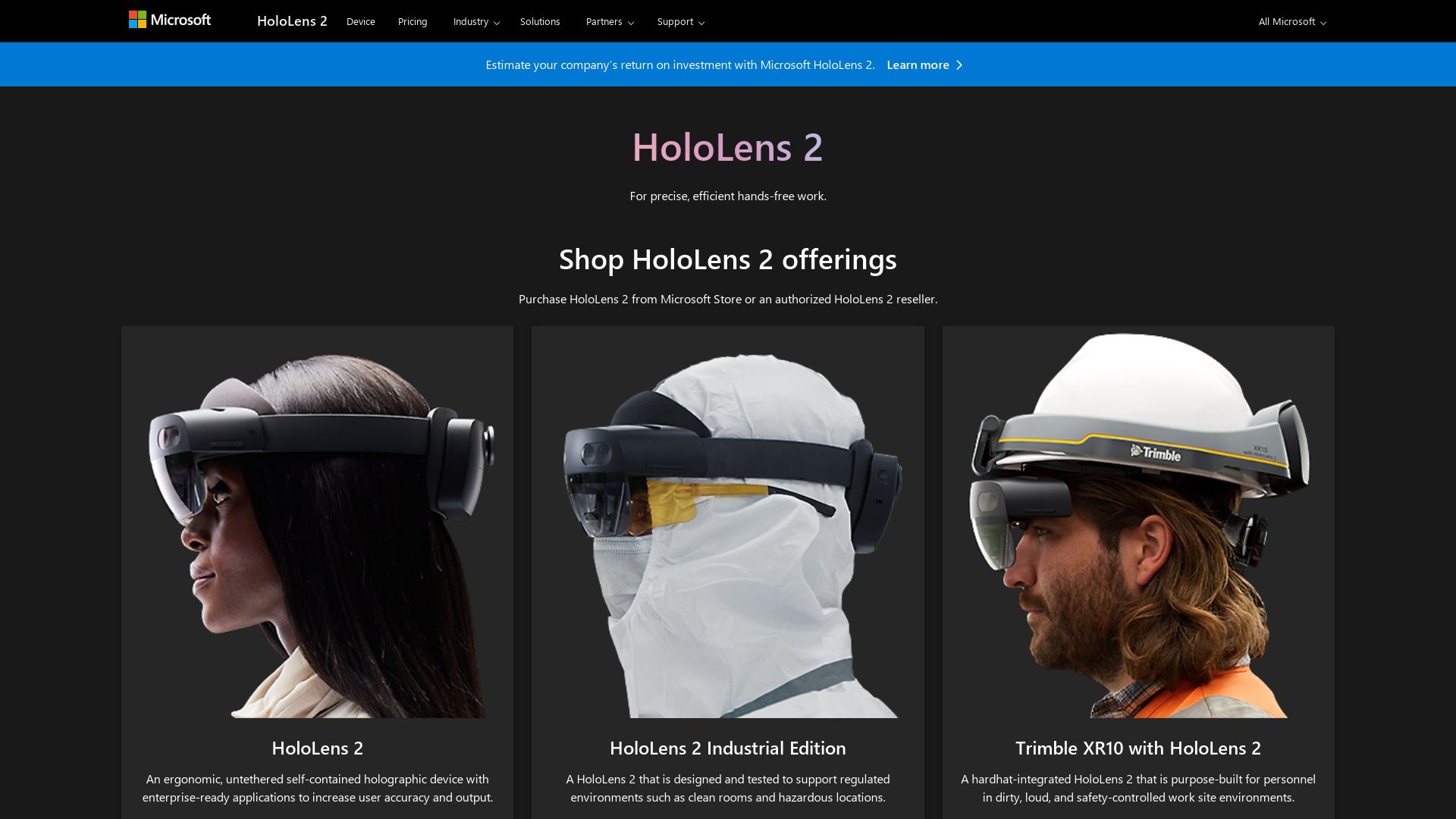
A product of Microsoft, HoloLens 2 is an enterprise-focused AR headset, forging an avenue for productivity and education, rather than targeting gamers or tech enthusiasts.
HoloLens 2 Top Features
- Equipped with transparent lenses built onto a visor offering a 1440×936 pixel resolution per eye using waveguide technology.
- Features an in-demand infrared camera for eye-tracking and a 1-MP Time-of-Flight depth sensor for precise hand-tracking and anchoring objects.
- HoloLens 2 weighs only 566 grams, affords enhanced comfort suitable for sustained use.
- Endowed with an 8MP resolution camera for promising human-computer interfacing & biometric security.
- Each set comes with an army-approved Integrated Visual Augmentation System (IVAS) for heightened spatial awareness.
| Processor | Storage | RAM |
|---|---|---|
| Qualcomm Snapdragon 850 | 64GB | 4GB DDR4 |
HoloLens 2 Downsides
- Costs a hefty $3,500, making it less affordable for individual consumers.
- Comes with an approximate battery life of 2-3 hours, which might be considered short for certain applications.
- While it boasts an array of impressive features, it lacks emphasis on games and entertainment.
HoloLens 2 Pricing
With an investment of $3,500, HoloLens 2 could solidify your enterprise AR capabilities.
HoloLens 2 Use Cases
Use case 1: Productivity
HoloLens 2 aids businesses to streamline workflows by facilitating real-time 3D content interaction through gesture controls and eye tracking. This feature promotes efficiency in demanding tasks.
Use case 2: Education
In an educational setting, HoloLens 2 propels immersive learning experiences by using its spatial sound and visual augmentation system to create realistic simulations.
Use case 3: Development
Developer-friendly, HoloLens 2 supports creating custom apps with AzureCloud storage, empowering developers to build unique mixed reality solutions.
Grant Sullivan
Content writer @ Aircada and self proclaimed board game strategist by day, AI developer by night.



